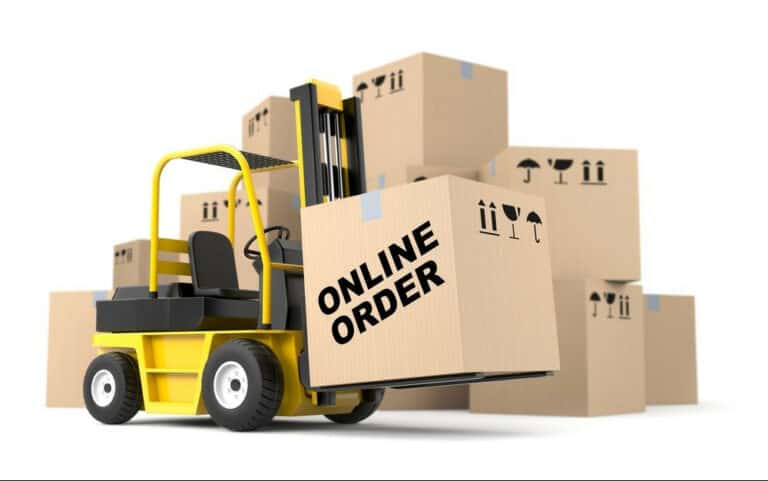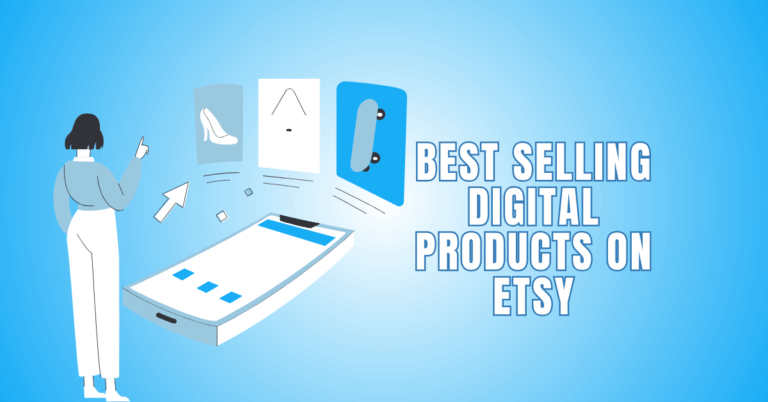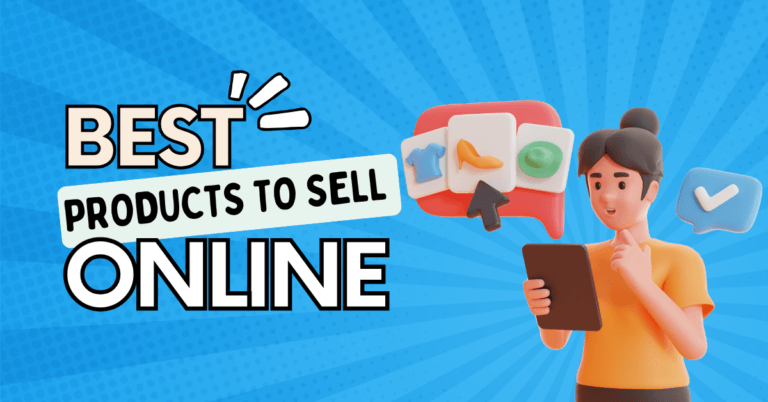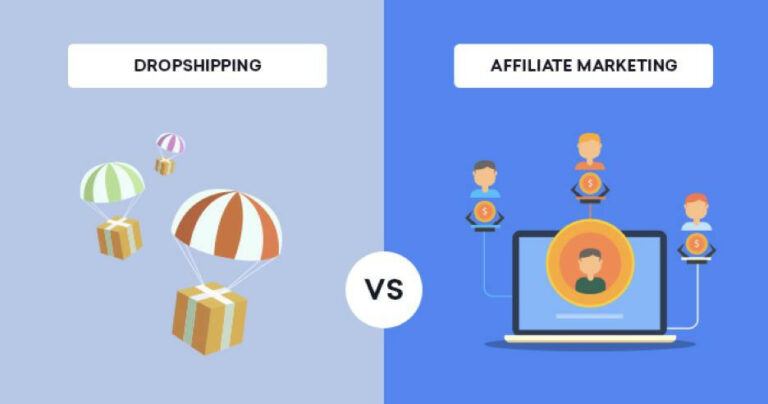Winning Content Strategy For eCommerce Blogs
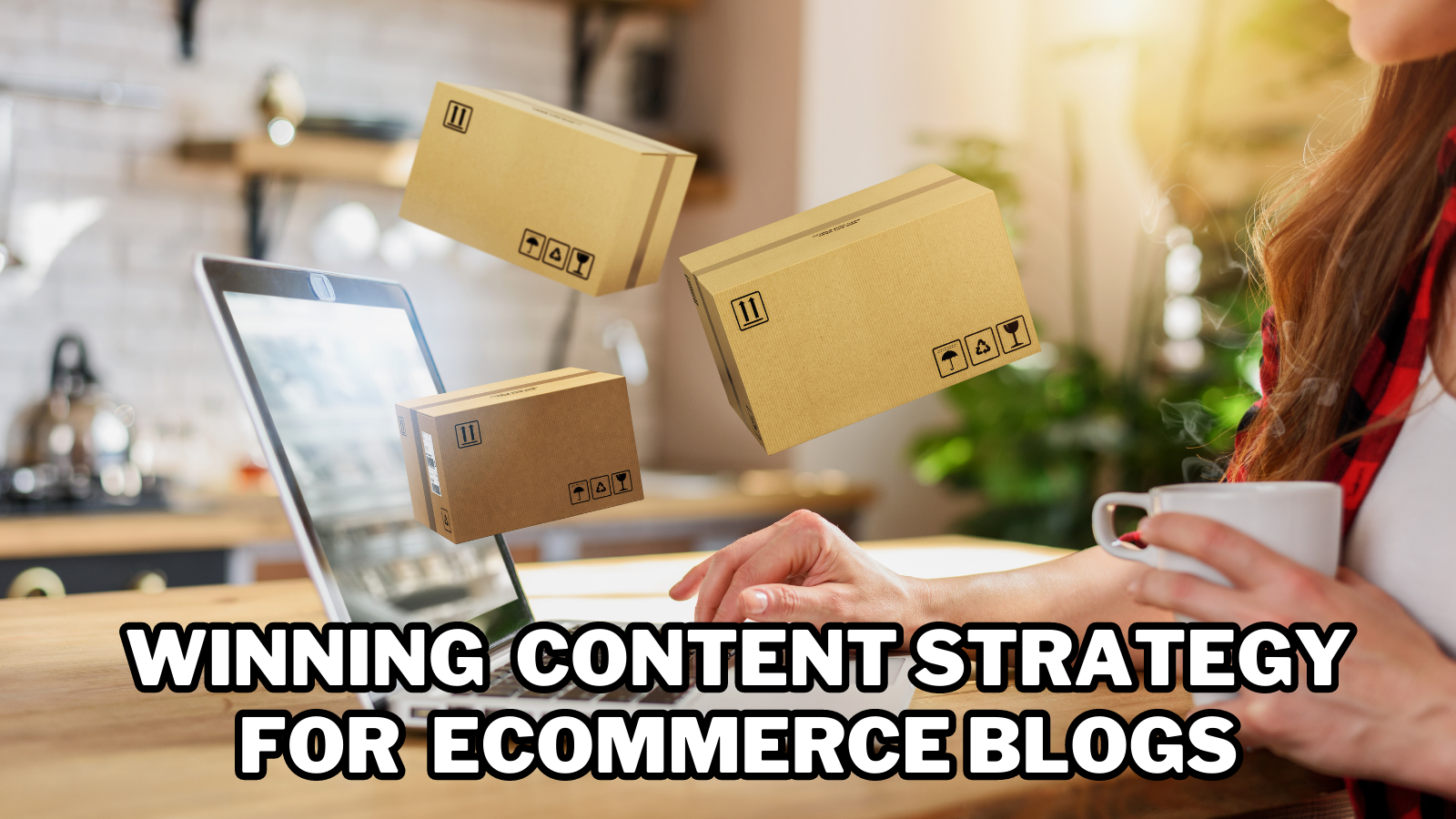
Winning Content Strategy For eCommerce Blogs
Customers seek better, more individualized products, conduct a Google search, and ask for recommendations.
Your e-commerce store needs to be set up to draw customers at all points along the customer journey. For conversions, your content strategy needs to draw in and keep customers.
Want to Start Making Money Online?
Try My #1 Recommendation Program!
The essential elements of a successful content strategy for your e-commerce blogs will be covered in detail in this article. You may improve your brand's visibility by putting these methods into practice.
This will increase organic traffic, which will boost conversions and income. This guide will give you the knowledge and strategies to prevail in the cutthroat e-commerce environment, whether you're just starting or looking to update your blog.

What Is Winning Content?
For an e-commerce blog, winning content successfully draws in and engages the target audience, generates organic traffic and eventually helps to enhance conversions and revenue. It goes beyond presenting goods and offers insightful and timely information that appeals to readers.
Here are some crucial elements and traits of effective content for an e-commerce blog:
1. Educational And Informative Content
Successful content teaches and informs readers about various topics relating to your products, industry, or specialty.
It goes beyond advertising content and is concerned with meeting the requirements and resolving the problems of your target market.
This includes educational articles, how-to manuals, product comparisons, hints & recommendations, and business insights. You establish yourself as a trustworthy source by providing useful information.
2. Unique And Captivating Voice
Make yourself stand out by giving your material a distinctive and charming voice. Finding your brand's tone, style, and personality that appeals to your target market is necessary.
A unique voice, whether conversational, authoritative, or hilarious, helps establish a memorable brand identity and improves reader engagement.

3. Search Engine Optimization (SEO)
For your e-commerce blogs to receive organic traffic, it is essential to incorporate SEO techniques into your content.
This is researching pertinent keywords and strategically putting them into your material, such as in headings, meta descriptions, and alt tags for images.
By making your material more visible in search engine results, you can increase the organic traffic to your site.

4. Engaging Visuals
Including eye-catching images in your material is crucial in the visually-focused world of e-commerce. To improve the entire user experience and hold the interest of your audience, utilize high-quality photos, infographics, videos, and interactive components.
Want to Find Out How To Start Your Home-Based Business?
Try My #1 Recommendation Platform!
Visual material may enhance your blog entries by illuminating ideas, showcasing items, and increasing interaction.
5. User-Generated Content
Using UGC to engage your audience and provide social proof can be very effective. Encourage customers to express their impressions, endorsements, and product reviews. To demonstrate real-world instances and foster confidence with potential clients, feature UGC on your blogs.
6. Personalization
Adapt your material to specific clients or demographic groups inside your target market. Utilize analytics and data to learn more about your customers' interests, habits, and past purchases.
You may improve customer satisfaction and increase conversion rates by providing personalized content ideas, product recommendations, or special offers.

7. Storytelling
Adding aspects of storytelling to your information may make it more interesting and memorable. Share anecdotes about your company's development, client triumphs, or behind-the-scenes information. Stories arouse feelings, form bonds, and help clients engage with your brand on a deeper level.

8. Social Media Integration
Use social media platforms to spread the word about your e-commerce blog posts and increase traffic.
On websites like Facebook, Instagram, Twitter, and LinkedIn, post teasers or excerpts from your blog entries and include direct links to your blogs to attract visitors.
To promote social sharing, have social sharing buttons on your blog entries so visitors can easily share your material with their networks.
Are You Tired Of Scams?
Try The Most-Trusted Training Platform To Make Money Online!
9. Data Analysis And Optimization
To optimize your blog content and improve the effectiveness of your e-commerce blogs, it is crucial to utilize web analytics tools and make data-driven decisions regularly.
These tools, such as Google Analytics, provide valuable insights into your audience's behaviour and help you assess the impact of your content.
You can better understand what resonates with your audience by tracking metrics like traffic, bounce rate, time on page, and conversion rates.
High traffic indicates popularity, while a low bounce rate and longer time on the page suggest engaging content. Conversion rates reflect the success of your blog in driving desired actions.
You can refine your content strategy by analyzing these metrics and spotting patterns to create more relevant and engaging blog posts.
10. Product-Focused Content
While offering informative and interesting content is crucial, pay attention to the importance of exhibiting your items.
The features, advantages, and distinctive selling factors of your items should be highlighted in your material.
Reviews, comparisons, lessons, and demonstrations of products are examples of this. You can persuade people to buy your items by presenting them interestingly and convincingly.
11. Interactive Information
Including interactive components in your e-commerce blogs can increase user engagement and make the information more memorable.
Interactive infographics, polls, surveys, calculators, quizzes, and polls are powerful tools for drawing in viewers and getting them involved.
Not only can interactive content improve engagement, but it also offers insightful information and useful statistics to help you plan your marketing campaigns.
12. Customer Testimonials And Case Studies
Sincere customer testimonials and case studies are effective social proof tools to increase credibility and confidence. On your blogs, highlight the success stories, testimonials from happy clients, and other encouraging material.
Instilling trust in your items in potential clients helps them decide to buy. To give the testimonials more legitimacy, consider integrating images or videos of satisfied clients.

13. Seasonal And Trendy Material
Create seasonal and trendy material to stay current and attract your audience. Incorporate seasonal trends, special occasions, and holidays into your blog entries if they pertain to your items.
Your material will be more interesting and shareable due to showing that your company is current and in touch with emerging trends.
14. Influencer Collaborations
Working with influencers or subject matter experts can boost your e-commerce blogs. Invite influencers to provide guest posts, product reviews, or other blog content if they have a responsive and relevant following.
Influencers can aid in boosting your brand's awareness, expanding its reach, and developing trust among its followers.

15. How-To Guides And Tutorials
By developing comprehensive how-to guides and tutorials, you can assist your audience in getting the most out of your products.
To use your items correctly, include detailed instructions, advice, and best practices. This material promotes your brand as an informed and valuable resource while improving customer experience. Add visual elements, such as pictures or videos, to your argument.
Always keep in mind that a successful content strategy relies heavily on consistency. Establish a regular posting schedule and create a content calendar to keep your blogs interesting and relevant.
You can establish your e-commerce blogs as the go-to resource for your target audience, increasing traffic and encouraging repeat business by consistently producing helpful, educational, and interesting material.

Winning Content Strategy For eCommerce Blogs
For an eCommerce blog, creating a successful content strategy requires rigorous preparation, investigation, and implementation. For your e-commerce blogs, follow the stages outlined below in detail to develop a successful content strategy:

1. Set Clear Goals And Objectives
Setting specific goals and objectives for your e-commerce blogs is crucial for developing a targeted and successful content plan.
Creating material that introduces your brand to new audiences and helps it gain recognition should be the focus of your content strategy if you want to raise brand awareness.
Create content that shows your brand's distinctive value proposition, personality, and offers, focusing on making it shareable and interesting.
This can be done by writing blog entries about your company's history, sharing behind-the-scenes information, or creating content that aligns with your target market's beliefs.
Use social media platforms, influencer partnerships, and guest blogging possibilities to increase your company's reach and awareness.
A comprehensive content production and optimization strategy is needed to increase organic traffic to your e-commerce blogs.
Conduct in-depth keyword research to find relevant and popular search terms for your products or sector.
Create a content strategy around these keywords to produce insightful, helpful, and optimized blog pieces.
Put SEO best practices to use by optimizing your meta tags, headings, and URLs and ensuring your content gives thorough responses to user searches.
Want To Learn How To Create Your Own Website And Online Business?
Try My #1 Recommendation Training And Hosting Platform!
Promote your blog through link building, social media sharing, and guest posting to boost its visibility and get organic visitors from search engines.
To increase conversions, you should develop content that guides potential consumers through the buying process and motivates them to take action.
Create material to inform your audience about your products, highlight their features and benefits, and address common objections.
Create material that informs your audience about your products, highlights their advantages and features, and resolves frequent objections or worries.
Use persuasive features like case studies, customer testimonials, and product comparisons to establish credibility and trust.
Use persuading calls to action (CTAs) throughout your blog posts to convince visitors to purchase or complete the targeted conversion action.

2. Understand Your Target Audience
Understanding your target audience is the key to producing pertinent and interesting material for your e-commerce blogs.
Conduct in-depth research into your target audience's demographics, interests, preferences, pain issues, and purchasing patterns to completely understand them.
Analyze the data you already have about your current customers, including their demographics, buying trends, and purchase histories.
Use analytics tools to learn about the browsing habits, levels of engagement, and referral sources of the people visiting your website.
You should also conduct surveys, interviews, or focus groups to obtain qualitative data directly from your target audience. Inquire about your business or items' interests, difficulties, and motivations.
Other benefits of social media listening are monitoring conversations and determining what subjects or trends are popular with your audience.
Create in-depth buyer personas representing the various audience segments using the study findings as a guide. Buyer personas are fictitious depictions of your ideal clients, including their traits, motives, and problems.
Assign names, work titles, and other pertinent details to each persona, such as age, gender, income level, and way of life.
Take a close look at their preferences, passions, and difficulties to learn how they consume content and make decisions.
Referring to these buyer profiles will help you guarantee that the material for your e-commerce blog aligns with their particular demands and interests.
Create material that speaks to their concerns, offers solutions to their problems, and provides them with useful knowledge. This focused strategy will attract and engage your target market while fostering trust and loyalty, leading to increased sales and company expansion.

3. Keyword Research And SEO Optimization
For your e-commerce blogs to be more visible and rank higher in search results, keyword research and SEO optimization are essential.
Find appropriate keywords and phrases that relate to your e-commerce offerings, your sector, and the search criteria of your target market.
To find appropriate keywords and obtain information on search volumes, competition levels, and related phrases, use keyword research tools like Google Keyword Planner, SEMrush, or Moz Keyword Explorer.
Consider concentrating on long-tail keywords, which are more precise and have less competition. Since long-tail keywords show more focused user intent, they often have higher conversion potential.
Consider commercial and instructional keywords, such as “best running shoes for marathon training” and “how to choose the right running shoes.”
Once you've created a list of your target keywords, thoughtfully include them in your blog entries. Include them in the URLs, meta descriptions, article titles, headings and subheadings.
However, be cautious that the keyword utilization is independent of the content's quality and readability and feels natural.
Aim to give thorough and worthwhile content while developing content to fulfill the keywords' purpose.
Create informative, high-quality blog posts that address your target audience's concerns, needs, and queries. This will improve SEO and help to establish your blog as a trustworthy source.
In addition to optimizing your on-page content, give strong internal linking inside your blogs some thought. Publish links on your e-commerce website to more relevant blog posts or product pages using relevant keywords.
Internal linking enables search engines to comprehend the relationships and significance between various pages on your website.
Utilize SEO analytics tools to check the success of your blogs frequently. Examine indicators like organic traffic, keyword ranks, and user interaction to see how well your keyword optimization plan works.
To continuously raise your blog's visibility and organic search ranks, modify and improve depending on the data.
Remember that SEO is a never-ending activity and that search engine algorithms change constantly. Keep up with current SEO best practices and market trends to ensure your keyword research and optimization techniques are effective.

4. Content Ideation And Planning
Creating a successful e-commerce blog requires careful planning and content ideation. Create a list of content ideas aligned with your aims and objectives based on your audience research and keyword analysis findings.
Consider the hobbies, tastes, and problems of your target market. Consider the subjects and ideas pertinent to your sector and line of business. Look for areas where new perspectives or insights might be added to the existing content.
Make a content calendar to keep track of your ideas for content and to keep a regular posting schedule.
This calendar will act as a guide for the content on your blogs and assist you in properly planning and managing your publishing strategy.
Decide whether your blog entries will be published daily, weekly, or monthly, and assign particular subjects or themes to each interval.
You may balance your content mix by using a range of formats and subjects. For instance, write educational articles that offer insightful commentary and sound guidance regarding your field or industry.
Create instruction manuals that assist your audience in resolving certain issues or achieving desired results.
To highlight your offers and assist customers in making wise decisions, including product comparisons and reviews.
To establish your blog as a go-to source for the most recent news, share industry news, trends, or research findings.
When organizing your content, consider the various phases of the buyer's journey. Create consideration content that informs and sways potential clients.
Create content with a conversion focus that motivates action and promotes purchases. Direct your audience through the buyer's journey and nurture them toward becoming devoted consumers by providing for each step.
Additionally, pay attention to seasonal occasions, occasions peculiar to one's industry, or trends that may generate timely material.
This enables you to participate in current debates and grab your audience's attention when it matters most.
Your content calendar should be regularly reviewed and improved in light of user feedback, performance indicators, and changing market trends.
To keep your blogs interesting, relevant, and in line with the wants and needs of your target audience, be adaptable and willing to change your content approach as necessary.

Conclusion
In conclusion, focus on providing useful, audience-focused content while optimizing it for search engines to develop a successful content strategy for your e-commerce blog.
Recognize your target audience, establish specific objectives, and develop content that meets their needs.
Create a content calendar with various formats and subjects, and use social media, email marketing, and partnerships to promote your material effectively.
You may draw in and engage your audience, increase organic traffic, and accomplish your business goals in the e-commerce sector by producing valuable content and aggressively advertising it.
I trust you enjoyed this article on Winning Content Strategy For eCommerce Blogs. Would you please stay tuned for more articles to come?
Take care!
JeannetteZ
Want to Learn How to Build Your Own Home-Based Online Business & Start Making Money Online From Your Comfortable Couch?
Try Wealthy Affiliate!
Your Opinion Is Important To Me
Thoughts? Ideas? Questions? I would love to hear from you. Please leave me your questions, experiences, remarks, and suggestions on Winning Content Strategy For eCommerce Blogs in the comments below. You can also contact me by email at Jeannette@WorkFromAnywhereInTheWorld.com.
Disclosure
This post may contain affiliate links. I earn from qualifying purchases as an Amazon Associate and other affiliate programs. Please read my full affiliate disclosure.
You may also enjoy the following articles:
Wealthy Affiliate Review – Scam or Legit? The Truth Exposed
Best Ways To Start An eCommerce Business
Legit Ways To Make Extra Money Before Christmas
How Do Blogs Work – Definition And Guide
How To Get Listed In Search Engines


